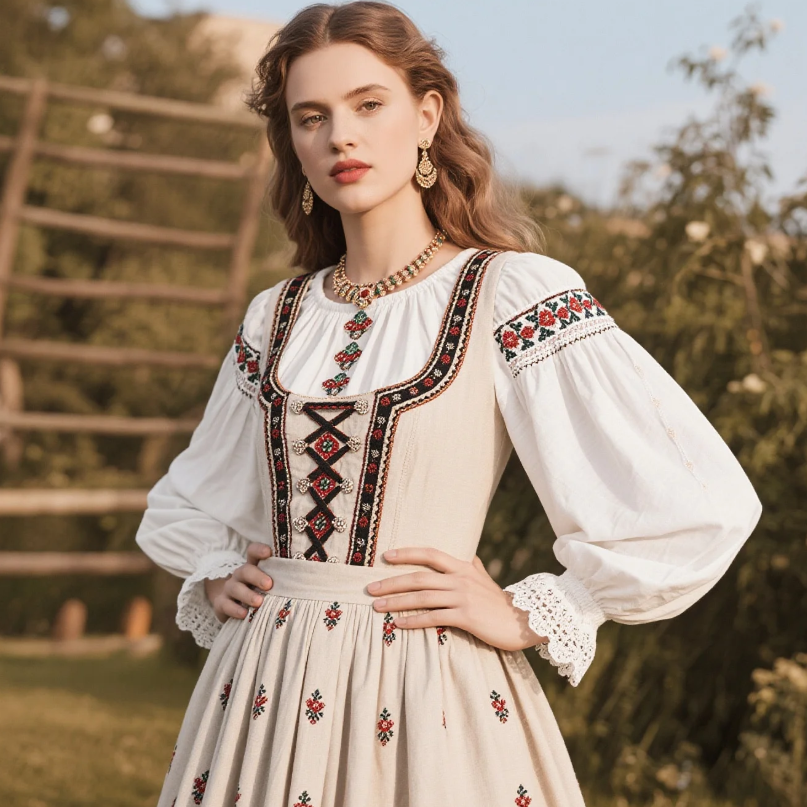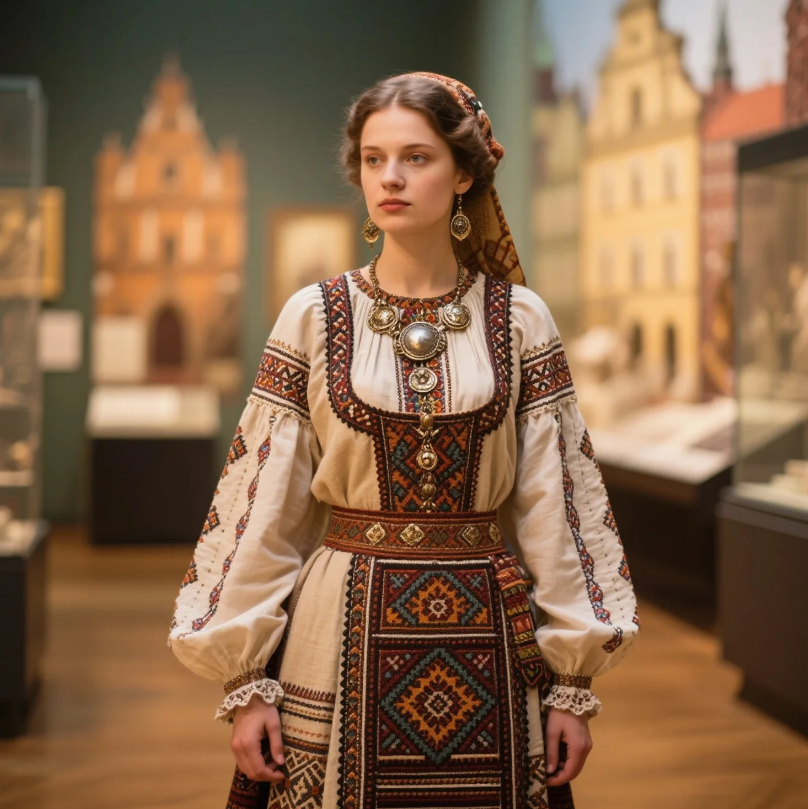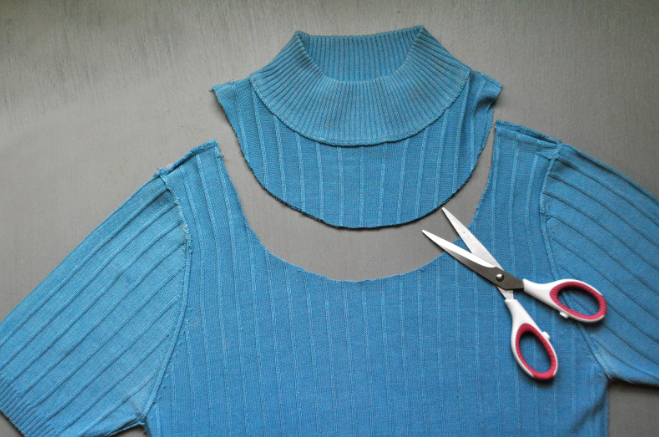
In a world obsessed with trends, there’s something undeniably powerful about fashion that tells a story older than hashtags. While today’s runways might be dominated by fast fashion, influencer aesthetics, and AI-generated outfits, traditional dress remains a quiet—but mighty—force weaving its way into the heart of modern style.
From the vibrant Ankara prints of West Africa to the ornate embroidery of Eastern Europe, traditional garments are no longer just museum relics or dusty heirlooms. They’re being reimagined, reinterpreted, and rebelliously re-worn on Instagram feeds, protest fronts, music videos, and even red carpets.
This isn’t about nostalgia. This is about identity, pride, and a little bit of “don’t tell me how to dress” attitude.
Dressing the Part: Why Fashion and Identity Are So Intertwined
Let’s start with the obvious: clothes aren’t just pieces of fabric. They are flags, symbols, secret languages stitched into seams. Whether it’s a Scottish tartan passed down through generations or a South Asian sari worn for a family celebration, what we wear is often a mirror of who we are—or who we want the world to think we are.
In today’s increasingly globalized culture, people are reaching back into their roots not to escape the present but to enrich it. Fashion, it turns out, is one of the most visible ways to say, “This is me—and these are my people.”
And no, it’s not just about aesthetics. It’s emotional. It’s political. And sometimes, it’s a little rebellious.
The Comeback Kid: Traditional Fashion Goes Modern
Traditional dress is no longer confined to festivals or national holidays. Around the world, designers are drawing deep inspiration from their cultural heritage and reworking it into contemporary styles that speak to the TikTok generation and their grandmothers.
Africa: The Reign of Ankara and Kente
African prints—particularly Ankara and Kente—are nothing short of electric. Once considered too “ethnic” for mainstream fashion, these bold fabrics are now strutting down runways in Paris, New York, and Johannesburg alike.
Nigerian designers like Lisa Folawiyo are turning Ankara into high-end couture, while Ghanaian creatives are reinventing Kente patterns into sleek streetwear. Beyoncé’s “Black Is King” was essentially a love letter to African aesthetics, and let’s be honest—who didn’t want to buy every outfit from that film?
These looks do more than slay. They reclaim stories, celebrate lineage, and boldly state, “My culture is not a costume. It’s couture.”
Asia: Where Silk, Saris, and Streetwear Collide
Asia’s fashion scene is a swirling kaleidoscope of heritage and high-style.
In India, the sari—a garment that dates back thousands of years—is being modernized by designers like Masaba Gupta and Sabyasachi Mukherjee, who infuse it with contemporary cuts, punk elements, and unapologetic color clashes. Millennials and Gen Z are styling saris with sneakers, crop tops, and bomber jackets, proving that tradition and trendiness can dance beautifully together.
Meanwhile in China, the qipao (cheongsam) is making a sleek return, popping up in everyday wear with edgier fabrics and shorter hemlines. It’s not just a dress; it’s a dialogue between the past and present.
Japan, too, is having a moment. The kimono has long been an icon, but modern stylists are giving it streetwear credibility by pairing it with denim, Doc Martens, and attitude.
Middle East: Modesty Meets Modernity
Modest fashion is booming, and the Middle East is leading the charge with a mix of elegance, tradition, and contemporary flair. The abaya, hijab, and kaftan have all undergone fashion-forward transformations.
Designers like Faiza Bouguessa and brands like The Modist have turned modesty into a runway revolution. Their work shows that you don’t have to bare skin to be bold—you just need to drape your culture in confidence.
Latin America: Embroidery with a Purpose
In Mexico and Central America, traditional garments like the huipil and rebozo are being celebrated and reimagined. Young designers and activists are using indigenous embroidery techniques to create fashion that is both stunning and subversive.
Take Carla Fernández, a Mexican designer who collaborates directly with indigenous artisans to preserve ancient techniques while making wildly fashionable pieces. Her collections aren’t just stylish—they’re socially conscious, resisting cultural erasure and fast fashion’s exploitative tendencies.
When Tradition Becomes a Protest Outfit
Fashion isn’t always fun and games—it can also be a weapon.
Wearing traditional dress in public, especially for diasporic communities, can be an act of defiance. It says, “I refuse to assimilate,” loud and clear. It asserts cultural pride in the face of racism, colonization, and historical whitewashing.
Think of Native American communities rocking powwow regalia as resistance. Or Black Americans donning dashikis during the Civil Rights era. These garments weren’t about fashion trends—they were battle armor in a fight for recognition, respect, and rights.
Even today, fashion is often a frontline. Ukrainian designers are preserving cultural symbols during wartime. Palestinian keffiyehs are worn globally as signs of solidarity. The clothing speaks when the wearers are silenced.
Fashion Faux Pas: When Cultural Dress Gets Appropriated
Of course, with visibility comes a darker side—appropriation. There’s a fine (and often blurry) line between cultural appreciation and exploitation.
When major brands lift indigenous designs without credit or profit-sharing, or when celebrities wear sacred garments as red-carpet flair, it erases the cultural significance and commodifies identity.
The key difference? Context, consent, and compensation. Cultural exchange is beautiful when it’s respectful. But when heritage becomes just a “look” stripped of meaning, it turns into fashion theft.
The New Generation: Hybrids and Hyphens
Today’s young adults—especially those with hyphenated identities—are remixing tradition like DJs with a wardrobe. They’re creating fusion fashion that reflects their dual realities: Korean-American, Nigerian-British, Moroccan-French.
A hijabi might wear a hanbok-inspired dress. A Peruvian might rock a chullo with a three-piece suit. A Filipino might blend barong embroidery into a denim jacket.
It’s not confusion—it’s creativity. It’s not dilution—it’s evolution.
These style mashups show that identity isn’t static. It’s a vibrant, ever-changing outfit tailored by experience, environment, and, yes, TikTok trends.
Digital Threads: The Role of Social Media and E-Commerce
The internet is the new runway. On platforms like Instagram, Pinterest, and TikTok, cultural fashion is going viral—often in ways that mainstream fashion media ignores.
Hashtags like #TraditionMeetsTrend and #DiasporaStyle are filled with creators showcasing their heritage with pride and innovation. Online marketplaces like Etsy and Depop are overflowing with handmade, culturally rooted garments by independent designers. And brands born online—like Hanifa, Diarrablu, and Tongoro—are giving global consumers the chance to wear fashion with meaning.
Plus, let’s be honest: scrolling through traditional fashion reels is the dopamine hit we didn’t know we needed.
So, What Does It All Mean?
We’re in a moment where tradition isn’t just being preserved—it’s being powered forward. Cultural dress isn’t frozen in time; it’s fluid, funky, and fiercely personal. It allows people to honor their past while strutting into the future with style.
Fashion has always been about transformation. Now it’s transforming what it means to belong, to resist, to celebrate. Every stitched pattern and bold fabric choice tells a story. And in a world desperate for authenticity, those stories are everything.
Stitching Together Identity, One Outfit at a Time
Whether it’s a modernized hanbok, a reimagined Andean poncho, or Ankara patchwork jeans, traditional clothing is a canvas for contemporary expression. It allows wearers to say, “I am more than where I live. I carry where I come from.”
In the end, cultural fashion isn’t about costumes—it’s about connection. It’s not about history stuck in a dusty chest—it’s about living heritage walking confidently down city streets.
So next time you see someone rocking traditional fashion in a modern way, don’t just compliment the look. Know that you’re witnessing culture, creativity, and identity stitched into every seam.
And if you’re lucky enough to wear your own culture on your sleeve? Wear it loud, wear it proud, and never apologize for your story.



